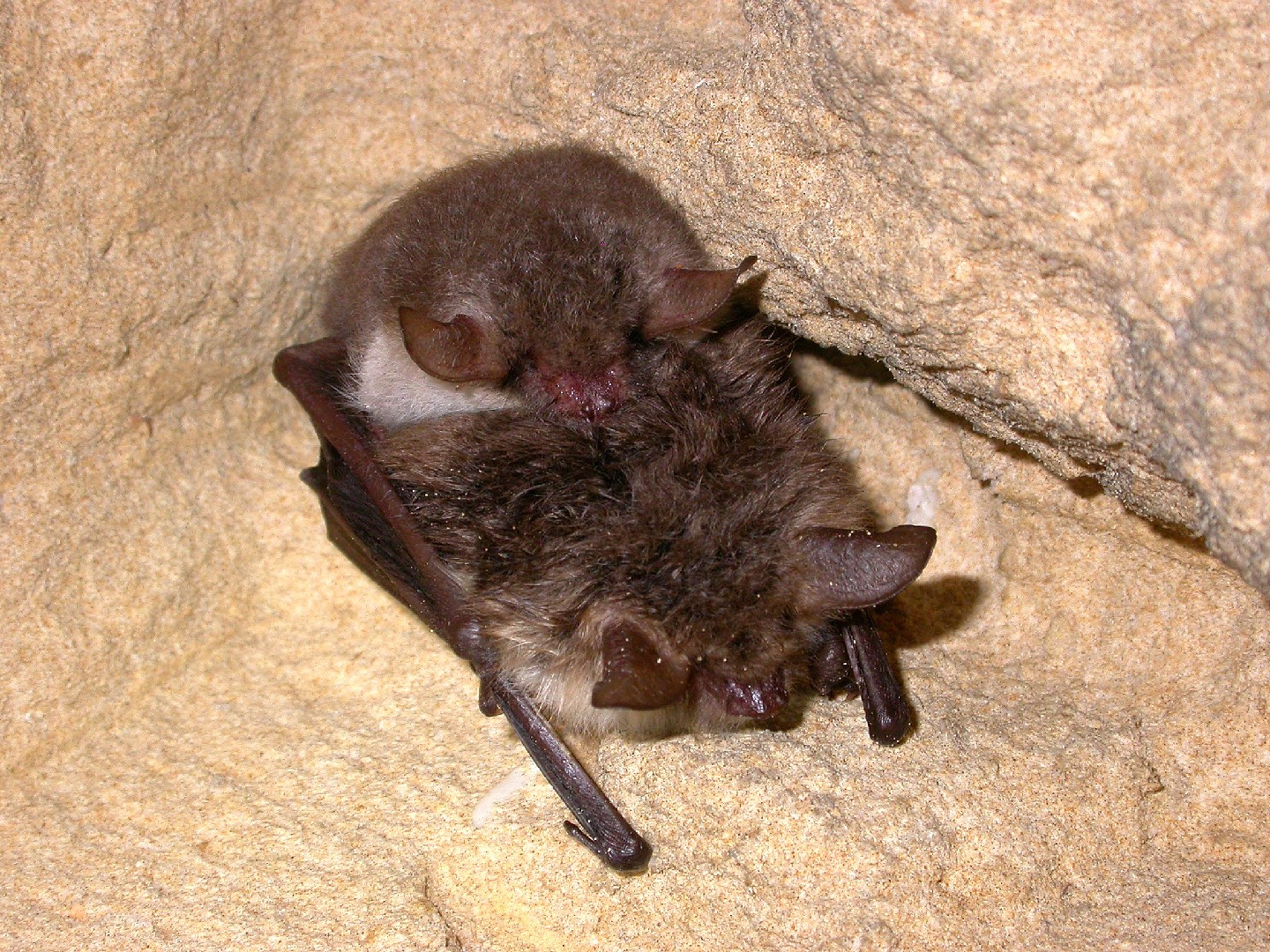Natterer's bat
A species of Mouse-eared bats Scientific name : Myotis nattereri Genus : Mouse-eared bats
Natterer's bat, A species of Mouse-eared bats
Botanical name: Myotis nattereri
Genus: Mouse-eared bats
Content
Description General Info
 Photo By Gilles San Martin , used under CC-BY-SA-2.0 /Cropped and compressed from original
Photo By Gilles San Martin , used under CC-BY-SA-2.0 /Cropped and compressed from original Description
The natterer's bat is a common, medium-sized bat found in hollowed-out trees in forests close to water; they may also be found in the roofs and attics of homes in developed areas. These bats are slow-fliers and usually stay close to vegetation where they feed on various insects. Though wild populations are stable, habitat fragmentation and pesticides may threaten the species.
Size
4.5 - 5 cm
Life Expectancy
15-25 years
Nest Placement
Cavity
Feeding Habits
Natterer's bat primarily consumes a range of insects and other invertebrates. It employs aerial hawking and glean feeding techniques, often hunting at dusk. This species has evolved to feed on prey in flight and has a preference for moths.
Habitat
Deciduous, coniferous trees, buildings, bat boxes, forests, parkland, open countryside with scattered woodland, holes in trees, nestboxes, In winter, caves, tunnels, mines, cellars, usually hiding in crevices 
Dite type
Insectivorous
General Info
Feeding Habits
Bird food type
Behavior
Natterer's bat is nocturnal and insectivorous. It emerges at dusk to hunt for insects and uses echolocation to find prey and orient itself at night. Like many other species of bat, it emits sounds at too high a frequency for most humans to detect and then interprets the echoes created in order to build a "sound picture" of its surroundings. The frequencies used by this bat species for echolocation lie between 23–115 kHz and have most energy at 53 kHz. The individual signals have an average duration of 3.8 ms. The wide bandwidth of its frequency-modulated search signals enables it to detect prey only a few centimetres from vegetation and it does not use vision, olfaction or sounds emitted by its prey for this purpose. The bat feeds on the wing and it mostly catches insects in flight but it is also able to feed on prey items such as spiders and caterpillars dangling close to foliage on silken threads. During a study of the bat's diet, examination of droppings showed that it can also gather prey items from the ground. The diet was found mostly to consist of large Diptera (flies) but Trichoptera (caddisfly), Hymenoptera (bees, wasps, ants and hoverflies) and Arachnida (spiders and harvestmen) were also commonly eaten. The remains of other prey items occasionally found in the droppings included Lepidoptera (moths), Coleoptera (beetles), Hemiptera (bugs), Dermaptera (earwigs) and Chilopoda (centipedes). This bat may use its interfemoral membrane to catch prey and the fringing hairs may have a sensory function. It has been shown that it can land on the ground to pick up and pursue invertebrates that are active at night, and continues to emit search signals in order to locate them precisely. Breeding takes place in the spring and many Natterer's bats may congregate in a nursery roost. After fertilisation, a female normally gives birth to a single offspring after a gestation period of fifty to sixty days, but twins sometimes occur. Weaning takes place six or seven weeks later and the juvenile becomes sexually mature the following year. 
Distribution Area
The Natterer's bat species complex has a western Palaearctic distribution and is native to most of Europe, parts of the Middle East and parts of northern Africa. Its range extends from southern Sweden, Finland and western Russia in the north to Ireland, the United Kingdom, Spain and Portugal to the west. It extends eastwards to Ukraine, western and southwestern Asia Minor, the Levant, the Caucasus region, the Kopet Dag Mountains in Turkmenistan, Iran and northern Kazakhstan. Its southern limit is Morocco and Algeria, southwards as far as the Atlas Mountains. Records from North Africa are few in number and the population there is likely to be small. Its historic range included Norway, in which it is now a possibly extirpated species. It is found from sea level up to an altitude of about 2,000 metres (6,600 ft). It is found in forests, parkland, and in open countryside with scattered woodland. It roosts in holes in trees, buildings and nestboxes. In winter it hibernates in caves, mineshafts, tunnels and cellars, hiding itself away in cracks and crevices usually near the cave entrance. It is largely a resident species and the summer roosts and winter hibernation sites are usually within 120 kilometres (75 mi) of each other. 
Scientific Classification
Phylum
Chordates Class
Mammals Order
Bats Family
Evening birds Genus
Mouse-eared bats Species
Natterer's bat